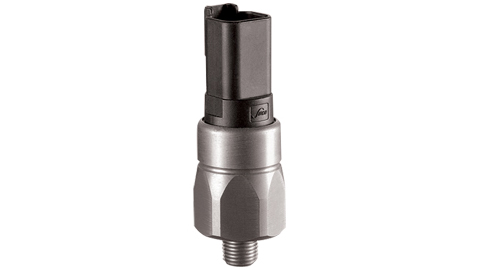8 Considerations When Selecting Your Suco-ESI Pressure Switch
1. Identify the standard operating pressure along with the maximum pressure of your application
Why is it important to identify these pressures? You must make sure the pressure switch can be safely used in your application. Choose a switch that is rated to handle, not only the normal operating pressure of your application, but also any pressure spikes you encounter in the system.
2. Determine if your required setpoint can be achieved by the switch
Regardless of whether you choose a mechanical or electronic pressure switch, there are limitations as to what setpoints can be achieved that are directly tied to the specific range of the switch. For example, with mechanical pressure switches, the setpoint range of the switch is often limited by the speed and travel of the actuator assembly, meaning the switch cannot provide setpoints in the lower 10% to 15% of the range. Electronic switches can provide setpoints almost anywhere in the range of the switch.
3. Consider the compatibility of process fittings, and/or other wetted materials such as diaphragms and pistons / O-rings
Be sure to check the compatibility between the process media and the wetted materials of the switch (i.e., process fittings, pistons, O-rings and diaphragms). Incompatibility can cause corrosion issues, safety concerns, leaching into the process media, etc.
4. Recognize any possible high temperatures and compare them to the capability or specifications of the switch
The datasheet typically lists the temperature specifications that your switch can withstand. As mentioned, using a switch beyond its stated temperature specifications can lead to setpoint drift and component issues.
5. Identify if the application requires hazardous area approvals, or industry type approvals
This includes hazardous approvals such as explosion-proof, intrinsically safe, non-incendive/increased safety as well as industry type approvals such as boiler and steam limit control approvals. Determining if an application requires hazardous area approval and general-purpose/safety approvals dictate which switch can be used for these types of applications. These approvals are provided by independent and nationally recognized test labs known as NTRLs. Agencies include ATEX, CSA, and IEC
6. Determine if your switch needs additional options
Do you require a factory setpoint, tags, oxygen cleaning, special materials for housing/enclosure, wall/pipe mounting brackets or specific certifications? One of the most common variations is to have the setpoint of the switch calibrated at the factory. Using this variation ensures the accuracy of the switch when received by the customer while adding to the ease of installation because the switch is ready to install.
7. Fixed or adjustable "deadband" (hysteresis)
The term deadband in pressure switches is the difference between the pressure at which the switch activates (the setpoint) and the pressure at which the switch deactivates (the reset point). Switches can have two different kinds of deadbands, fixed or adjustable.
8. Using a switch indoors or outdoors
The environment in which you use your pressure switch can impact its functionality. There are many challenges when using a switch outdoors, including temperature and weather (rain, snow, sleet, etc.). You must also consider what IP/NEMA ratings you need to satisfy the location of your pressure switch.

Click here to see more Suco-ESI Pressure Switches:
Additional pricing or technical questions?
Categories
Page Categories
